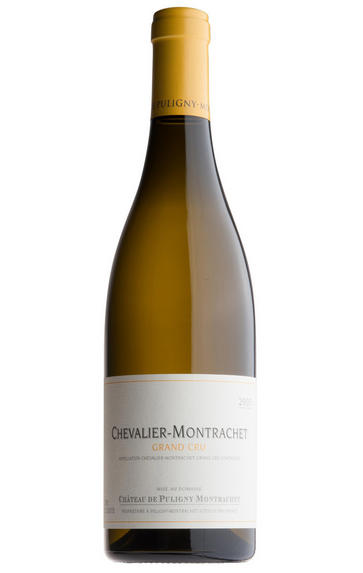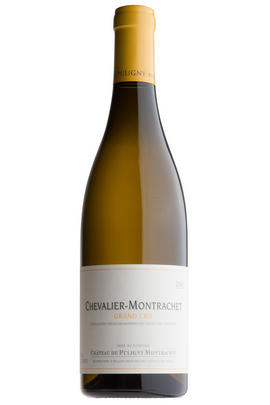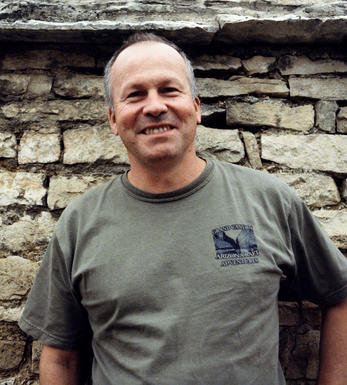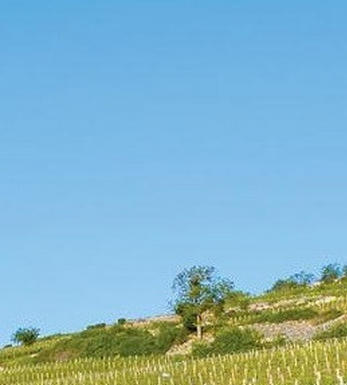
2018 Chevalier-Montrachet, Grand Cru, Domaine de Montille, Burgundy

Critics reviews
Neal Martin, Vinous (January 2020)
About this WINE

Domaine de Montille
The De Montille family has long been a venerable one in Burgundy, though Domaine de Montille’s reputation was properly established in 1947: prominent Dijon lawyer Hubert de Montille inherited 2.5 hectares in Volnay, later adding further parcels in Volnay, Pommard and Puligny. Hubert’s style was famously austere: low alcohol, high tannin and sublime in maturity.
His son, Etienne, joined him from ’83 to ’89 before becoming the senior winemaker, taking sole charge from ’95. Etienne also managed Château de Puligny-Montrachet from ’01; he bought it, with investors, in ’12.
The two estates were separate until ’17, when the government decreed that any wine estate bearing an appellation name could no longer offer wine from outside that appellation.
The solution was to absorb the château estate into De Montille – the amalgamated portfolio is now one of the finest in the Côte d’Or.
Etienne converted the estate to organics in ‘95, and to biodynamics in 2005, making the house style more generous and open, focusing on the use of whole bunches for the reds.

Chevalier-Montrachet
Chevalier-Montrachet is one of the most renowned Grand Cru vineyards in Burgundy. Located in the Côte de Beaune subregion, specifically in the villages of Puligny Montrachet and Chassagne Montrachet, Chevalier-Montrachet is famous for producing exceptional white wines. The terroir is characterized by its limestone-rich soils, which contribute to the minerality and complexity of the wines. The vineyard's exposure to the sun, slope, and altitude also play crucial roles in shaping the unique characteristics of the wines.
Only white wines are produced in Chevalier-Montrachet and are exclusively made from Chardonnay grapes. The wines are known for their richness, elegance, and complexity, often displaying a combination of citrus, orchard fruit, floral, and mineral notes.
Chevalier-Montrachet wines are known for their ability to age gracefully. The best vintages can evolve and improve in the bottle for several decades, developing additional complexity and nuance over time. Production is limited, however, due to the small size of the vineyards.

Chardonnay
Chardonnay is often seen as the king of white wine grapes and one of the most widely planted in the world It is suited to a wide variety of soils, though it excels in soils with a high limestone content as found in Champagne, Chablis, and the Côte D`Or.
Burgundy is Chardonnay's spiritual home and the best White Burgundies are dry, rich, honeyed wines with marvellous poise, elegance and balance. They are unquestionably the finest dry white wines in the world. Chardonnay plays a crucial role in the Champagne blend, providing structure and finesse, and is the sole grape in Blanc de Blancs.
It is quantitatively important in California and Australia, is widely planted in Chile and South Africa, and is the second most widely planted grape in New Zealand. In warm climates Chardonnay has a tendency to develop very high sugar levels during the final stages of ripening and this can occur at the expense of acidity. Late picking is a common problem and can result in blowsy and flabby wines that lack structure and definition.
Recently in the New World, we have seen a move towards more elegant, better- balanced and less oak-driven Chardonnays, and this is to be welcomed.


Buying options
Add to wishlist
Description
The wine comes from a quarter-hectare in the most northern part of the vineyard. The nose is intensely floral with some promising spicy reduction. The palate exudes class and refinement, with a creamy, silky texture and effortless grace. Drink2025-2035.
wine at a glance
Delivery and quality guarantee